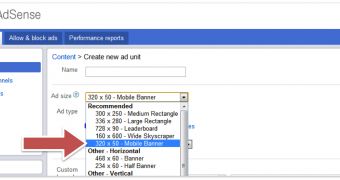The mobile web is coming into its own, it's no longer a promise, it's here. What's more, while the mobile web still warrants its name, lines are getting blurred. Smartphones can display full websites, albeit not ideally, and the increasing number of device sizes, from 3-inch phones to 10-inch tablets, makes it hard to say where the "regular" web ends and the mobile one begins.
It's true for publishers and advertisers as well. Few websites have the option of not providing a mobile version. Few advertisers can miss out on the mobile space.
It's no wonder then that Google is anticipating all of this and is merging all of its mobile ad units into the main AdSense product.
"We launched AdSense for mobile content before the smartphone revolution when everyone had a flip phone. Our goal was to help pioneering publishers monetize their mobile content. Since then, we’ve seen mobile technology advance and an increasing number of consumers are viewing content from “smarter” mobile devices," Vishay Nihalani, product manager for Mobile Ads at Google, wrote.
"To make it easier for publishers to use AdSense to monetize mobile web pages, we've migrated all mobile ad unit sizes, including the mobile banner ad unit, into the core product," he announced.
All of the current mobile ad units will be available in the regular AdSense now, making it easy for advertisers to create ads that target both desktops and mobile devices without having to jump through hoops or use several products at the same time.
However, mobile websites will have to update their AdSense code to ensure they're getting the ads from the new source and not the old mobile AdSense which will stop serving ads for "high-end" devices, aka smartphones and tablets, come May 1st, 2012. Older mobile websites, built for WAP, will continue to use the mobile AdSense though.

 14 DAY TRIAL //
14 DAY TRIAL //